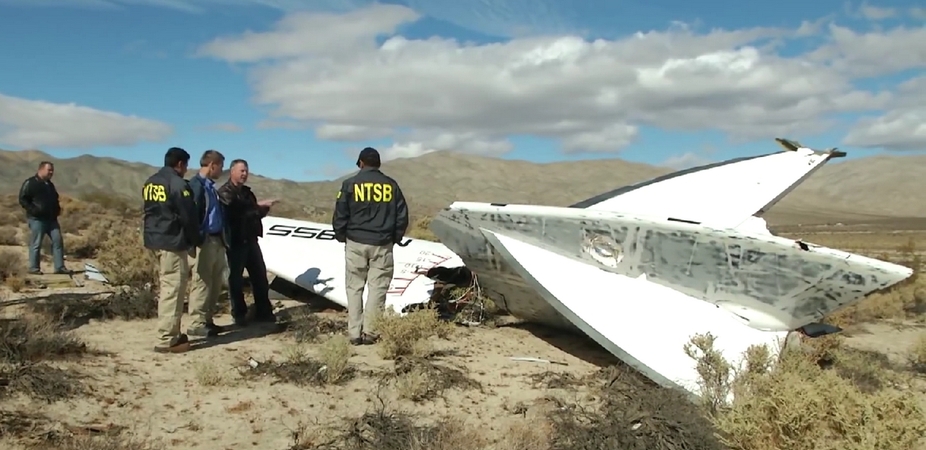
The pilot who survived the tragic crash of Virgin Galactic's SpaceShipTwo last month didn't know that his copilot unlocked the space plane's re-entry system early, investigators say.
SpaceShipTwo broke apart in midair during a test flight from California's Mojave Air and Space Port on Oct. 31, killing copilot Michael Alsbury and sending pilot Peter Siebold to the hospital. Alsbury apparently unlocked the vehicle's "feathering" system — which rotates SpaceShipTwo's tail booms upward to increase stability and drag during re-entry — too soon, investigators from the National Transportation Safety Board (NTSB) have said.
The NTSB is piecing together details of just what happened, and why. The picture got a little clearer on Friday (Nov. 7), when investigators talked to Siebold. [Virgin Galactic SpaceShipTwo Crash Investigation in Photos]
"According to the pilot, he was unaware that the feather system had been unlocked early by the copilot," NTSB officials wrote in an update today (Nov. 12).
"His description of the vehicle motion was consistent with other data sources in the investigation," they added. "He stated that he was extracted from the vehicle as a result of the break-up sequence and unbuckled from his seat at some point before the parachute deployed automatically."
The wreckage of SpaceShipTwo has been secured and stored for further study, and investigators have returned to Washington, D.C., from Mojave, officials said. The crash investigation could take up to 12 months, NTSB acting Chairman Christopher Hart has said.
SpaceShipTwo's feathering system is designed to deploy only after two actions are taken; a lever must be moved to the the "unlock" position, and then a handle must be shifted to the "feather" position. On Oct. 31, the system apparently deployed even though the second action didn't occur (the handle wasn't moved to "feather"). In a news conference earlier this month, Hart referred to the deployment as "an uncommanded feather."
Get the Space.com Newsletter
Breaking space news, the latest updates on rocket launches, skywatching events and more!
SpaceShipTwo is designed to be lofted to an altitude of 50,000 feet (15,000 meters) by a mothership called WhiteKnightTwo. At this point, the six-passenger space plane is released, and its rocket engine kicks on, blasting the vehicle to suborbital space.
That's how things will work when SpaceShipTwo is up and running. But the spacecraft remains in test mode for now; the Oct. 31 mission was SpaceShipTwo's fourth rocket-powered flight test, and its 55th test flight of any kind.
More than 700 people, including a number of celebrities, have put down deposits to reserve a seat aboard SpaceShipTwo; tickets currently cost $250,000 apiece. Passengers will go up to an altitude of 62 miles (100 kilometers), experience a few minutes of weightlessness and get to see Earth against the blackness of space, Virgin Galactic representatives say.
Follow Mike Wall on Twitter @michaeldwall and Google+. Follow us @Spacedotcom, Facebook or Google+. Originally published on Space.com.
Join our Space Forums to keep talking space on the latest missions, night sky and more! And if you have a news tip, correction or comment, let us know at: community@space.com.

Michael Wall is a Senior Space Writer with Space.com and joined the team in 2010. He primarily covers exoplanets, spaceflight and military space, but has been known to dabble in the space art beat. His book about the search for alien life, "Out There," was published on Nov. 13, 2018. Before becoming a science writer, Michael worked as a herpetologist and wildlife biologist. He has a Ph.D. in evolutionary biology from the University of Sydney, Australia, a bachelor's degree from the University of Arizona, and a graduate certificate in science writing from the University of California, Santa Cruz. To find out what his latest project is, you can follow Michael on Twitter.









